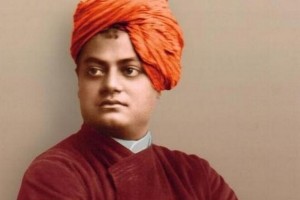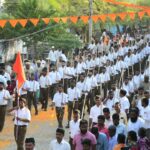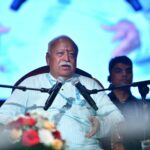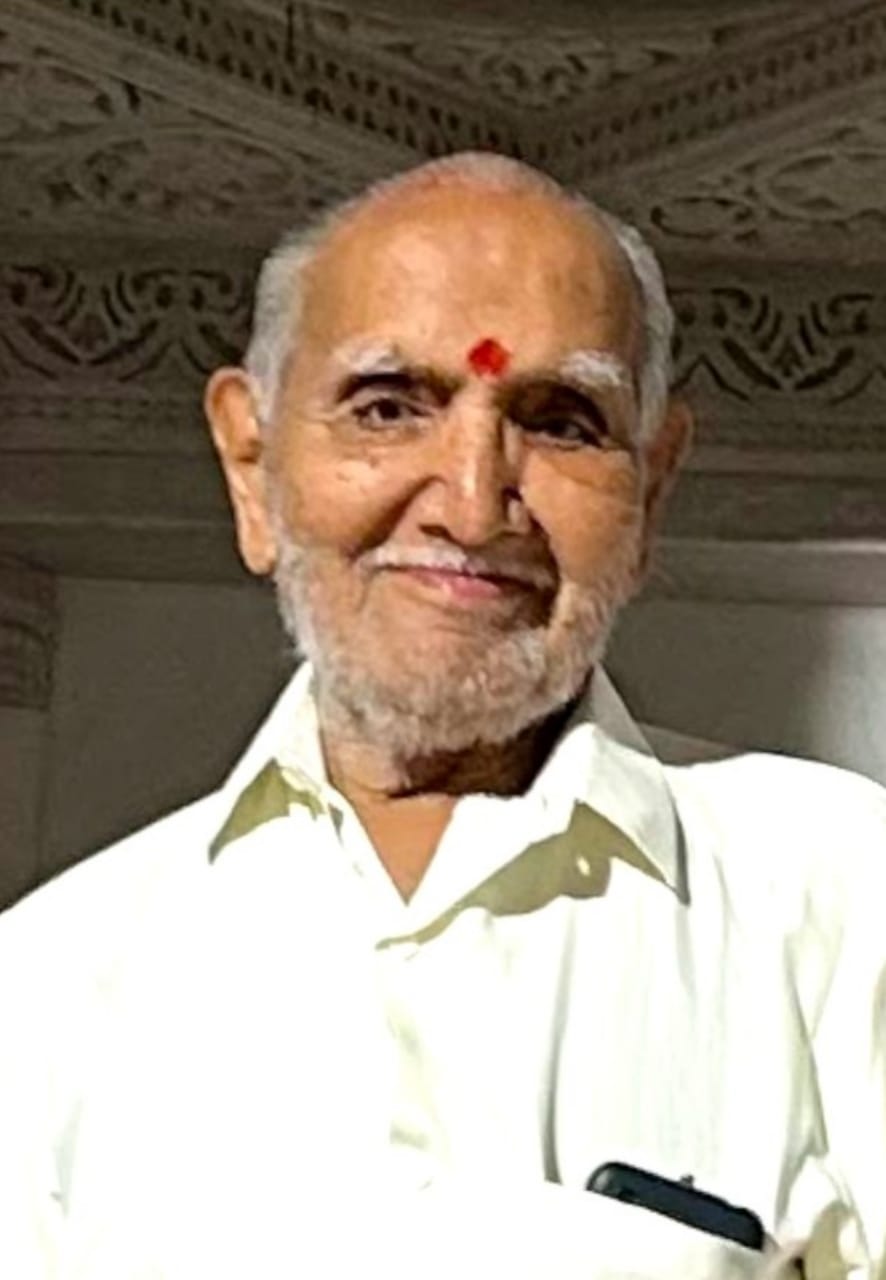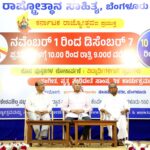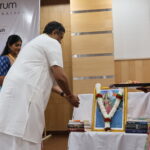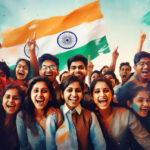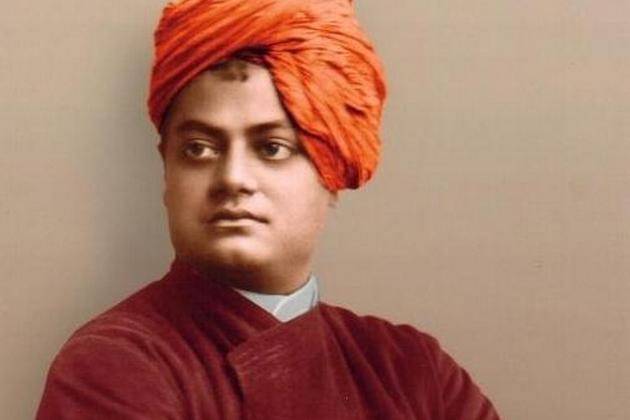
Year 2012 to 2013 will be celebrated across the world as 150th birth anniversary of Swami Vivekananda
Swami Vivekananda (12 January 1863 – 4 July 1902), bornNarendranath Dutta was the chief disciple of the 19th century mystic Ramakrishna Paramahansaand the founder of the Ramakrishna Math and the Ramakrishna Mission. He is considered a key figure in the introduction of Hindu philosophies ofVedanta and Yoga to the “Western” World, mainly in America and Europe and is also credited with raising interfaith awareness, bringing Hinduismto the status of a major world religion during the end of the 19th century C.E.Vivekananda is considered to be a major force in the revival of Hinduism in modern India.[5] He is perhaps best known for his inspiring speech which began: “Sisters and Brothers of America,” through which he introduced Hinduism at the Parliament of the World’s Religions at Chicago in 1893.
Swami Vivekananda was born in an aristocratic Bengali kayastha family of Calcutta on January 12, 1863. Vivekananda’s parents influenced his thinking—his father by his rationality and his mother by her religious temperament. From his childhood, he showed an inclination towards spirituality and God realization. His guru, Ramakrishna, taught him Advaita Vedanta (non-dualism); that all religions are true and that service to man was the most effective worship of God. After the death of his Guru, Vivekananda became a wandering monk, touring the Indian subcontinent and acquiring first-hand knowledge of conditions in India. He later traveled to Chicago and represented India as a delegate in the 1893 Parliament of World Religions. He conducted hundreds of public and private lectures and classes, disseminating Vedanta and Yoga in America, England and Europe. He also established the Vedanta societies in America and England.
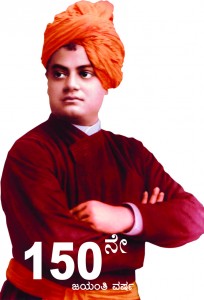
Early days:
Swami Vivekananda was born in 3, Shimla Pally, Calcutta (presently known as Kolkata) on 12 January 1863, Monday at 6:49 A.M.,during the Makara Sankrantifestival in a traditional Kayastha family,and was given the name Narendranath Dutta. His father Viswanath Dutta was an attorney ofCalcutta High Court. He was considered generous, and had a liberal and progressive outlook in social and religious matters. His mother Bhuvaneshwari Devi was pious and had practiced austerities and prayed to Vireshwar Shiva of Varanasi to give her a son. She reportedly had a dream in which Shiva rose from his meditation and said that he would be born as her son. Narendranath’s thinking and personality were influenced by his parents—the father by his rational mind and the mother by her religious temperament. From his mother he learnt the power of self-control. One of the sayings of his mother Narendranath quoted often in his later years was, “Remain pure all your life; guard your own honor and never transgress the honor of others. Be very tranquil, but when necessary, harden your heart.” He was reportedly adept in meditation and could reportedly enter the state of samadhi. He reportedly would see a light while falling asleep and he reportedly had a vision of Buddha during his meditation. During his childhood, he had a great fascination for wandering ascetics and monks.
Narendranath had varied interests and a wide range of scholarship in philosophy, religion, history, the social sciences, arts, literature, and other subjects.[18] He evinced much interest in the Hindu scriptures like theVedas, the Upanishads, the Bhagavad Gita, the Ramayana, the Mahabharata and the Puranas. He was also well versed in classical music, both vocal and instrumental and is said to have undergone training under twoUstads, Beni Gupta and Ahamad Khan. Since boyhood, he took an active interest in physical exercise, sports, and other organizational activities.[18] Even when he was young, he questioned the validity of superstitious customs and discrimination based on caste and refused to accept anything without rational proof and pragmatic test. Narendranath started his education at home then he joined the Metropolitan Institution of Ishwar Chandra Vidyasagar in 1871 When his father moved to Raipur in 1877 for 2 years then Narendranath along with the whole family shifted there. At that time there were no good schools in Raipur so he spent his time with his father and had discussions on spiritual topics. Narendranath learned Hindi in Raipur and for the first time the Question of existence of God came to his mind. It is believed that once he experienced an ecstasy during this period of life. The family returned to Calcutta in 1879 but it is believed that these 2 years were the turning point in his life. Raipur is sometimes termed as the “Spiritual Birthplace” of Swami Vivekananda.
College and Brahmo Samaj
In 1879 after his family moved back to Calcutta, he passed the entrance examination for Presidency College, Calcutta, entering it for a brief period and subsequently shifting to General Assembly’s Institution. During the course, he studied western logic, western philosophy and history of European nations. In 1881 he passed the Fine Arts examination and in 1884 he passed the Bachelor of Arts.
Narendranath is said to have studied the writings of David Hume, Immanuel Kant, Johann Gottlieb Fichte, Baruch Spinoza, Georg W. F. Hegel, Arthur Schopenhauer, Auguste Comte, Herbert Spencer,John Stuart Mill, and Charles Darwin.Narendra became fascinated with the Evolutionism of Herbert Spencer, and translated Spencer’s book on Education into Bengali for Gurudas Chattopadhyaya, his publisher. Narendra also had correspondence with Herbert Spencer for some time. Alongside his study of Western philosophers, he was thoroughly acquainted with Indian Sanskrit scriptures and many Bengali works. According to his professors, student Narendranath was a prodigy. Dr. William Hastie, the principal of Scottish Church College, where he studied during 1881-84, wrote, “Narendra is really a genius. I have travelled far and wide but I have never come across a lad of his talents and possibilities, even in German universities, among philosophical students.” He was regarded as a srutidhara—a man with prodigious memory. After a discussion with Narendranath, Dr. Mahendralal Sarkar reportedly said, “I could never have thought that such a young boy had read so much!”
Narendranath became the member of a Freemason’s lodge and the breakaway faction from the Brahmo Samaj led by Keshab Chandra Sen. His initial beliefs were shaped by Brahmo concepts, which include belief in a formless God and deprecation of the worship of idols. Not satisfied with his knowledge of Philosophy, he wondered if God and religion could be made a part of one’s growing experiences and deeply internalized. Narendra went about asking prominent residents of contemporary Calcutta whether they had come “face to face with God”. but could not get answers which satisfied him.
His first introduction to Ramakrishna occurred in a literature class in General Assembly’s Institution, when he heard Principal Reverend W. Hastie lecturing on William Wordsworth’s poem The Excursion and the poet’s nature-mysticism. In the course of explaining the word trance in the poem, Hastie told his students that if they wanted to know the real meaning of it, they should go to Ramakrishna of Dakshineswar. This prompted some of his students, including Narendranath to visit Ramakrishna.
WITH RAMAKRISHNA:
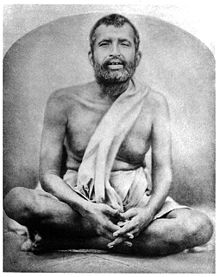
Narendranath’s meeting with Ramakrishna in November 1881 proved to be a turning point in his life. About this meeting, Narendranath said, “Ramakrishnalooked just like an ordinary man, with nothing remarkable about him. He used the most simple language and I thought “Can this man be a great teacher?”. I crept near to him and asked him the question which I had been asking others all my life: “Do you believe in God, Sir?” “Yes”, he replied. “Can you prove it, Sir?” “Yes”. “How?” “Because I see Him just as I see you here, only in a much intenser sense.” That impressed me at once. […] I began to go to that man, day after day, and I actually saw that religion could be given. One touch, one glance, can change a whole life.”[40][41] Even though Narendra did not accept Ramakrishna as his guru initially and revolted against his ideas, he was attracted by his personality and visited him frequently.[42] He initially looked upon Ramakrishna’s ecstasies and visions as, “mere figments of imagination”, “mere hallucinations”. As a member of Brahmo samaj, he revolted against idol worship and polytheism, and Ramakrishna’s worship of Kali.He even rejected the Advaitist Vedantism of identity with absolute as blasphemy and madness, and often made fun of the concept
Though at first Narendra could not accept Ramakrishna and his visions, he could not neglect him either. It had always been in Narendra’s nature to test something thoroughly before he would accept it. He tested Ramakrishna, who never asked Narendra to abandon reason, and faced all of Narendra’s arguments and examinations with patience—”Try to see the truth from all angles” was his reply. During the course of five years of his training under Ramakrishna, Narendra was transformed from a restless, puzzled, impatient youth to a mature man who was ready to renounce everything for the sake of God-realization. In time, Narendra accepted Ramakrishna as guru, and when he accepted, his acceptance was whole-hearted and with complete surrendering as disciple.
In 1885 Ramakrishna suffered from throat cancer and he was shifted to Calcutta and later to Cossipore. Vivekananda and his brother disciples took care of Ramakrishna during his final days. Vivekananda’s spiritual education under Ramakrishna continued there. At Cossipore, Vivekananda reportedly experiencedNirvikalpa Samadhi. During the last days of Ramakrishna, Vivekananda and some of the other disciples received the ochre monastic robes from Ramakrishna, which formed the first monastic order of Ramakrishna. Vivekananda was taught that service to men was the most effective worship of God. It is reported that when Vivekananda doubted Ramakrishna’s claim of avatar, Ramakrishna reportedly said, “He who was Rama, He who wasKrishna, He himself is now Ramakrishna in this body.” During his final days, Ramakrishna asked Vivekananda to take care of other monastic disciples and in turn asked them to look upon Vivekananda as their leader. Ramakrishna’s condition worsened gradually and he expired in the early morning hours of August 16, 1886 at the Cossipore garden house. According to his disciples, this was Mahasamadhi.
As a Sanyasi:

Later, In 1888, Vivekananda left the monastery as a Parivrâjaka—the Hindu religious life of a wandering monk, “without fixed abode, without ties, independent and strangers wherever they go.” His sole possessions were a kamandalu (water pot), staff, and his two favorite books—Bhagavad Gita and The Imitation of Christ. Narendranath travelled the length and breadth of India for five years, visiting important centers of learning, acquainting himself with the diverse religious traditions and different patterns of social life. He developed a sympathy for the suffering and poverty of the masses and resolved to uplift the nation. Living mainly on Bhiksha or alms, Narendranath traveled mostly on foot and railway tickets bought by his admirers whom he met during the travels. During these travels he gained acquaintance and stayed with scholars, Dewans, Rajas and people from all walks of life—Hindus, Muslims, Christians, Pariahs (low caste workers) and Government officials.
- Northern India
In 1888, he started his journey from Varanasi. At Varanasi, he met pandit and Bengali writer, Bhudev Mukhopadhyay and Trailanga Swami, a famous saint who lived in a Shiva temple. Here, he also met Babu Pramadadas Mitra, the noted Sanskrit scholar, to whom the Swami wrote a number of letters asking his advice on the interpretation of the Hindu scriptures. After Varanasi he visited Ayodhya, Lucknow, Agra, Vrindavan, Hathras and Rishikesh. At Hathras he met Sharat Chandra Gupta, the station master who later became one of his earliest disciples as Sadananda. Between 1888-1890, he visited Vaidyanath, Allahabad. From Allahabad, he visited Ghazipur where he met Pavhari Baba, a Advaita Vedanta ascetic who spent most of his time in meditation. Between 1888-1890, he returned to Baranagore Math few times, because of ill health and to arrange for the financial funds when Balaram Bose and Suresh Chandra Mitra, the disciples of Ramakrishna who supported the Math had expired.
- The Himalayas
In July 1890, accompanied by his brother monk, Swami Akhandananda, he continued his journey as a wandering monk and returned to the Math only after his visit to the West. He visited, Nainital, Almora, Srinagar, Dehradun, Rishikesh, Haridwar and the Himalayas. During this travel, he reportedly had a vision ofmacrocosm and microcosm, which seems to be reflected in the Jnana Yoga lectures he gave later in the West, “The Cosmos—The Macrocosm and The Microcosm“. During these travels, he met his brother monks —Swami Brahmananda, Saradananda, Turiyananda, Akhandananda and Advaitananda. They stayed at Meerut for a few days where they passed their time in meditation, prayer and study of scriptures. At the end of January 1891, the Swami left his brother monks and journeyed to Delhi alone.
- Rajputana
At Delhi, after visiting historical places he journeyed towards Alwar, in the historic land of Rajputana. Later he journeyed to Jaipur, where he studied Panini’sAshtadhyayi with a Sanskrit scholar. He next journeyed to Ajmer, where he visited the palace of Akbar and the famous Dargah and left for Mount Abu. At Mount Abu, he met the maharaja, Ajit Singh of Khetri, who became his ardent devotee and supporter. Swami Tathagatananda, a senior monk of the Ramakrishna Order, and the Head of Vedanta Society, New York wrote as follows :
At Khetri, he delivered discourses to the Raja, became acquainted with the pandit Ajjada Adibhatla Narayana Dasu, and studied Mahābhāṣya on sutras of Panini. After two and a half months there, towards the end of October 1891, he proceeded towards Rajasthan and Maharastra.[57][64]
- Western India
Continuing his travels, he visited Ahmedabad, Wadhwan, Limbdi. At Ahmedabad he completed his studies of Muslim and Jain culture. At Limbdi, he met Thakore Sahed Jaswant Singh who had himself been to England and America. From the Thakore Saheb, the Swami first got the idea of going to the West to preach Vedanta. He later visited Junagadh, where he was the guest of Haridas Viharidas Desai, the Diwan of the State, who was so charmed with his company that every evening he, with all the State officials, used to meet the Swami and converse with him until late at night. From there he also visited Girnar, Kutch, Porbander, Dwaraka, Palitana, Nadiad where he stayed at Diwan Haridas Viharidas Desai’s house Nadiad ni haveli and Baroda. At Porbander he stayed three quarters of a year, in spite of his vow as a wandering monk, to perfect his philosophical and Sanskrit studies with learnedpandits; he worked with a court pandit who translated the Vedas.
He later traveled to Mahabaleshwar and then to Pune. From Pune he visited Khandwa and Indore around June 1892. At Kathiawar he heard of the Parliament of the World’s Religions and was urged by his followers there to attend it. He left Khandwa for Bombay and reached there on July 1892. In a Pune bound train he met Bal Gangadhar Tilak. After staying with Tilak for few days in Poona, the Swami travelled to Belgaum in October 1892. At Belgaum, he was the guest of Prof. G.S. Bhate and Sub-divisional Forest officer, Haripada Mitra. From Belgaum, he visited Panjim and Margao in Goa. He spent three days in the Rachol Seminary, the oldest convent-college of theology of Goa where rare religious literature in manuscripts and printed works in Latin are preserved. He reportedly studied important Christian theological works here. From Margao the Swami went by train to Dharwar, and from there directly to Bangalore, in Mysore State.
At Bangalore, the Swami became acquainted with Sir K. Seshadri Iyer, the Dewan of Mysore state, and later he stayed at the palace as guest of the Maharaja of Mysore, Chamaraja Wodeyar. Regarding the Swami’s learning, Sir Seshadri reportedly remarked, “a magnetic personality and a divine force which were destined to leave their mark on the history of his country.” The Maharaja provided the Swami a letter of introduction to the Dewan of Cochin and got him a railway ticket.
From Bangalore, he visited Trichur, Kodungalloor, Ernakulam. At Ernakulam, he met Chattampi Swamikal, contemporary of Narayana Guru in early December 1892. From Ernakulam, he journeyed to Trivandrum, Nagercoil and reached Kanyakumari on foot during the Christmas Eve of 1892. At Kanyakumari, the Swami reportedly meditated on the “last bit of Indian rock”, famously known later as the Vivekananda Rock Memorial, for three days. At Kanyakumari, Vivekananda had the “Vision of one India”, also commonly called “The Kanyakumari resolve of 1892”.
From Kanyakumari he visited Madurai, where he met the Raja of Ramnad, Bhaskara Setupati, to whom he had a letter of introduction. The Raja became the Swami’s disciple and urged him to go to the Parliament of Religions at Chicago. From Madurai, he visited Rameshwaram,Pondicherry, he travelled to Madras and here he met some his most devoted disciples, who played important roles in collecting funds for Swami’s voyage to America and later in establishing the Ramakrishna Mission in Madras. With the aid of funds collected by his Madras disciples and Rajas of Mysore, Ramnad, Khetri, Dewans and other followers Vivekananda left for Chicago on 31 May 1893 from Bombay assuming the name Vivekananda—the name suggested by the Maharaja of Khetri.
FIRST VISIT TO WEST:
His journey to America took him through China, Canada and he arrived at Chicago in July 1893.[78] But to his disappointment he learnt that no one without credentials from a bona fide organization would be accepted as a delegate. He came in contact with Professor John Henry Wright of Harvard University.[79] After inviting him to speak at Harvard and on learning from him not having credentials to speak at the Parliament, Wright is quoted as having said, “To ask for your credentials is like asking the sun to state its right to shine in the heavens.” Wright then addressed a letter to the Chairman in charge of delegates writing, “Here is a man who is more learned than all of our learned professors put together.” On the Professor, Vivekananda himself writes “He urged upon me the necessity of going to the Parliament of Religions, which he thought would give an introduction to the nation.
Parliament of World Religions:
The Parliament of Religions opened on 11 September 1893 at the Art Institute of Chicago. On this day Vivekananda gave his first brief address. He represented India and Hinduism. Though initially nervous, he bowed to Saraswati, the goddess of learning and began his speech with, “Sisters and brothers of America!”. To these words he got a standing ovation from a crowd of seven thousand, which lasted for two minutes. When silence was restored he began his address. He greeted the youngest of the nations in the name of “the most ancient order of monks in the world, the Vedic order of sannyasins, a religion which has taught the world both tolerance and universal acceptance.” And he quoted two illustrative passages in this relation, from the Bhagavad Gita—”As the different streams having their sources in different places all mingle their water in the sea, so, O Lord, the different paths which men take, through different tendencies, various though they appear, crooked or straight, all lead to Thee!” and “Whosoever comes to Me, through whatsoever form, I reach him; all men are struggling through paths that in the end lead to Me.”[83] Despite being a short speech, it voiced the spirit of the Parliament and its sense of universality.[83][84]
Dr. Barrows, the president of the Parliament said, “India, the Mother of religions was represented by Swami Vivekananda, the Orange-monk who exercised the most wonderful influence over his auditors.” He attracted widespread attention in the press, which dubbed him as the “Cyclonic monk from India”. The New York Critique wrote, “He is an orator by divine right, and his strong, intelligent face in its picturesque setting of yellow and orange was hardly less interesting than those earnest words, and the rich, rhythmical utterance he gave them.” The New York Heraldwrote, “Vivekananda is undoubtedly the greatest figure in the Parliament of Religions. After hearing him we feel how foolish it is to sendmissionaries to this learned nation.” The American newspapers reported Swami Vivekananda as “the greatest figure in the parliament of religions” and “the most popular and influential man in the parliament”.
He spoke several more times at the Parliament on topics related to Hinduism and Buddhism. The parliament ended on 27 September 1893. All his speeches at the Parliament had one common theme—Universality—and stressed religious tolerance.
Back in India (1897-1899)
Colombo to Almora
Vivekananda arrived in Colombo on January 15, 1897 and received an ecstatic welcome. Here, he gave his first public speech in East, India, the Holy Land. From there on, his journey to Calcutta was a triumphal progress. He traveled from Colombo to Pamban, Rameshwaram, Ramnad, Madurai, Kumbakonam andMadras delivering lectures. People and Rajas gave him enthusiastic reception. In the procession at Pamban, the Raja of Ramnad personally drew the Swami’s carriage. On way to Madras, at several places where the train would not stop, the people squatted on the rails and allowed the train to pass only after hearing the Swami. From Madras, he continued his journey to Calcutta and continued his lectures up to Almora.While in the West he talked of India’s great spiritual heritage, on return to India the refrain of his ‘Lectures from Colombo to Almora’ was uplift of the masses, eradication of the caste virus, promotion of the study of science, industrialization of the country, removal of poverty, the end of the colonial rule.These lectures have been published as Lectures from Colombo to Almora. These lectures are considered to be of nationalistic fervor and spiritual ideology. His speeches had tremendous influence on the Indian leaders, including Mahatma Gandhi, Bipin Chandra Pal and Balgangadhar Tilak.
On 1 May 1897 at Calcutta, Vivekananda founded the Ramakrishna Mission—the organ for social service. The ideals of the Ramakrishna Mission are based on Karma Yoga. Its governing body consists of the trustees of the Ramakrishna Math- the organ to carry out religious works. Due to the close association between the two, both have their headquarters at Belur, near Calcutta. This was the beginning of an organized social and religious movement to help the masses through educational, cultural, medical and relief work.
Two other monasteries were founded by him- one at Mayavati on the Himalayas, near Almora called the Advaita Ashrama and another at Madras. Two journals were also started, Prabuddha Bharata in English and Udbhodan in Bengali.The same year, the famine relief work was started by Swami Akhandananda at Murshidabad district.
Vivekananda had inspired Sir Jamshedji Tata to set up a research and educational institution when they had travelled together from Yokohama to Chicagoon the Swami’s first visit to the West in 1893. About this time the Swami received a letter from Tata, requesting him to head the Research Institute of Science that Tata had set up. But Vivekananda declined the offer saying that it conflicted with his spiritual interests.
SECOND VISIT TO WEST and LAST YEARS:
Vivekananda once again left for the West in June 1899, amid his declining health. He was accompanied by Sister Nivedita and Swami Turiyananda. He spent a short time in England, and went on to America. During this visit, he founded the Vedanta societies at San Francisco and New York. He also founded “Shanti Ashrama” (peace retreat) at California, with the aid of a generous 160-acre (0.65 km2) gift from an American devotee. Later he attended the Congress of Religions, in Paris in 1900. The Paris addresses are memorable for the scholarly penetration evinced by Vivekananda related to worship of Linga and authenticity of the Gita. From Paris he paid short visits to Brittany, Vienna, Istanbul, Athens and Egypt. For the greater part of this period, he was the guest of Jules Bois, the famous thinker. He left Paris on October 24, 1900, and arrived at the Belur Math on December 9, 1900.
Vivekananda spent few of his days at Advaita Ashrama, Mayavati and later at the Belur Math. Henceforth till the end he stayed at Belur Math, guiding the work of Ramakrishna Mission and Math and the work in England and America. Thousands of visitors came to him during these years including The Maharaja of Gwalior and in December 1901, the stalwarts of Indian National Congress including Lokamanya Tilak. In December 1901, he was invited to Japan to participate in the Congress of Religions, however his failing health made it impossible. He undertook pilgrimages to Bodhgaya and Varanasi towards his final days.
Death
His tours, hectic lecturing engagements, private discussions and correspondence had taken their toll on his health. He was suffering from asthma, diabetesand other physical ailments. A few days prior to his demise, he was seen intently studying the almanac. Three days before his death he pointed out the spot for this cremation—the one at which a temple in his memory stands today. He had remarked to several persons that he would not live to be forty.[120]
On the day of his death, he taught Shukla-Yajur-Veda to some pupils in the morning at Belur Math.[121] He had a walk with Swami Premananda, a brother-disciple, and gave him instructions concerning the future of the Ramakrishna Math.
Vivekananda died at ten minutes past nine P.M. on July 4, 1902 while he was meditating. According to his disciples, this was Mahasamadhi. Afterward, his disciples recorded that they had noticed “a little blood” in the Swami’s nostrils, about his mouth and in his eyes. The doctors remarked that it was due to the rupture of a blood-vessel in the brain, but they could not find the real cause of the death. According to his disciples, Brahmarandhra — the aperture in the crown of the head — must have been pierced when he attained Mahasamadhi. Vivekananda had fulfilled his own prophecy of not living to be forty years old.
